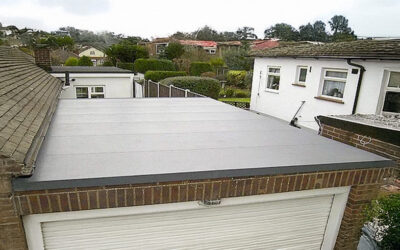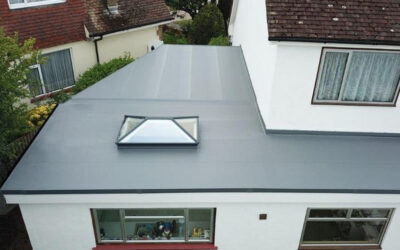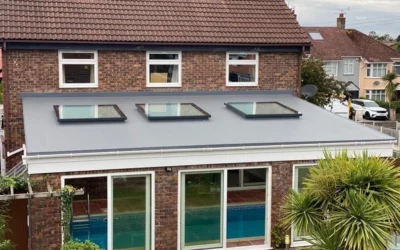Does the cold weather and snow affect a flat roof?
Snow spells trouble for homeowners in a variety of ways. And with the UK currently in the grip of minus temperatures and snow in some places, many people will be wondering whether their properties can cope with the drastic temperature change. So how does snow affect a flat roof?
There is a common misconception that heavy snow disproportionately affects flat roofing structures.
In reality, snow can subject any type of roof – pitched or flat – to extreme conditions which could cause damage or premature expiry.
The ability of the roof to withhold the weight of the snow and emerge unscathed from a freezing winter of prolonged snow will depend entirely on the quality of the products used and to some extent the workmanship.
Many colder countries with heavy annual snowfall continue to use flat roofing structures – the difference is they are structured in a way to weather any adverse conditions.
Traditional flat roofs, made from felt, do not perform so well in such extreme temperatures. Many homeowners suffering problems with their flat roofs this winter will have older-style felt roofs or ageing roofs that require replacing.
So what makes traditional flat roofs susceptible to ice and snow damage?
Flat roofs cannot rely on gravity to dispose of snow and ice in the same way that a pitched roof can.
Just one square foot of compacted snow can weigh up to 50 pounds. Such a weight multiplied can place serious stress on a flat roof and older flat roofs commonly seen on carports, garages and sheds were never designed to support this level of weight.
Heavy snowfall which accumulates on a traditional flat roof can cause puncture wounds or even result in its collapse.
Another problem to contend with is the melting and refreezing of the roof-top snow which takes place naturally via the heat from the sun or the warmth escaping from your home.
When snow melts it often refreezes at the edges and other joins of your roof which creates an ice dam. Repetition of the freezing and melting process will overtime cause your roof to rapidly deteriorate.
As water seeps under the shingles it refreezes, creating an even bigger gap for future drainage to fill which can raise your shingles. As more melting water drains away it will look for and create cracks in the wood and walls which will expand in size until eventually water leaks into your home.
If your flat roof is past its sell-by date, then it is most cost-effective in the long-term to opt for replacement using a modern, superior product.
A properly installed and designed flat roof using advanced technical solutions will perform in any climate.
High Tech’s single-ply PVC membranes are specifically engineered to form a dimensionally stable waterproof covering which is unaffected by expansion and contraction, fully protected against damaging solar rays and the very worst of British weather.
The cold weather is set to stay for the time-being so don’t wait until you get a leak to investigate the performance of your flat roof. Find out today if you need a replacement – and potentially save the contents of your home.




















